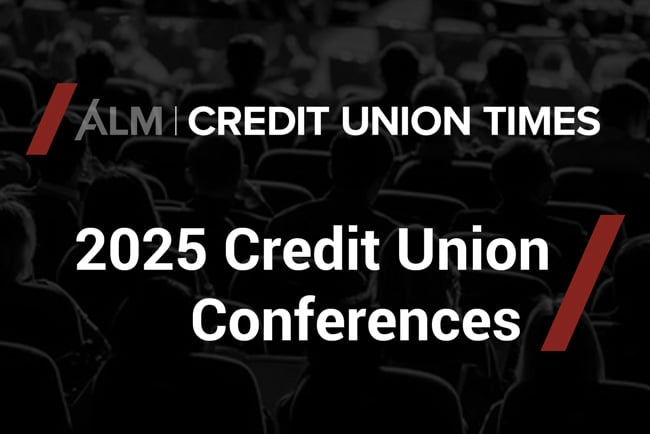Using small size to a credit union's advantage and the importance of providing an innovative member experience were among the points emphasized by Ed Brett, e-commerce channel manager at Westminster Savings Credit Union in British Columbia, Canada, during his presentation at the CU Water Cooler Symposium at FORUM Credit Union.
Brett said that although Westminster is only 0.4% the size of the largest bank in Canada, "that doesn't matter one bit to our strategy. We feel we can go up against those banks." He added that his credit union has 12 branches, 50,000 members and about $1.7 billion in assets.
Brett said small size enables credit unions to be agile, mobile, quick and ear-to-the-ground. "If you're not using your small size as a strength, then you've just given up one of the best competitive advantages you have over the banks," he said.
Recommended For You
Brett said the credit union business is not about marketing, government, politics, employee engagement, social media, or any number of other things. "We are free to concentrate on banking and we should be excellent bankers," he said. He added that if credit unions do all of these other activities well, "but we suck at banking, then we're betraying our DNA and we're providing zero to no value to our members."
Credit unions, Brett said, should be investing in a new member experience. He pointed out that what happens in a CU branch is very similar if not identical to what happens at regional and national bank branches. "We have by virtue of our size the ability to incubate new and radical ideas in our retail branch networks, and it's not clear to me why we're not doing that," he said.
One challenge the industry faces, Brett said, is that credit unions want to be seen as a source of professional advice, yet they create environments that are oriented around selling products and services. "It's very difficult to provide a professional advice model in a retail banking service delivery model," he said.
No other industry, Brett said, models its service delivery approach after credit unions. On the other hand, he argued, credit unions have a lot to learn from other industries. He shared an anecdote about a recent trip he made to an oil change place where he was served by a teenager. "They got me in and out, they told me exactly what I needed to do, and they did their job professionally," Brett said. "I had a better service experience from that 14-year-old young man than I did 20 minutes later when I did my mortgage removal papers at my credit union."
One way to improve the CU service delivery model, he said, is to focus on access. Brett cited an ING Bank senior vice president who observed that the only true innovation that has occurred in the financial services space in the last 25 years has occurred in access. "We need to add access to our members as one of the hallmarks or pillars of our business," he said.
Small size, he reiterated, is an advantage for credit unions in creating a radical new member experience because CUs are closer to their employees than large banks are to theirs. "We should use that," he said. "We should make sure that they are well equipped to provide very quick, very convenient, very adequate service."
Small size, he added, also allows CUs to engage more directly with members and to effect change within the organization more quickly. He said that while he can speak to three people at his credit union and get something done, it can take years for a large bank to make a change.
Brett challenged the idea that social media provides value to members. Westminster's members, he said, have told the credit union they don't want it to be on Facebook–they want better rates and more convenient services.
He also challenged the dictum that people don't want to be treated like numbers. "In banking, 95% of the time they probably do," he said. "They just want to get their banking done and leave."
Credit unions should therefore measure their success by how little they inconvenience their members, he said. For example, if members want to spend 30 minutes a month on banking, they shouldn't have to spend an hour due to the online banking site being down. "We might be doing our members a service if we are less in their lives, but their finances are more in their lives," he said.
Another way to evaluate performance, he said, is the ability to attract people who want to do business with the credit union not because it's a credit union, but because it's good at providing financial services.
Brett said credit unions can attract new members by using their web presence to create the illusion of size. "That Web page that Westminster savings runs, that online banking service we have is just as good, just as available as any big bank," he said. "We're out there just like Bank of America and Citibank." And, he added, exploiting the online channel is cheaper than building branches.
© 2025 ALM Global, LLC, All Rights Reserved. Request academic re-use from www.copyright.com. All other uses, submit a request to [email protected]. For more information visit Asset & Logo Licensing.






